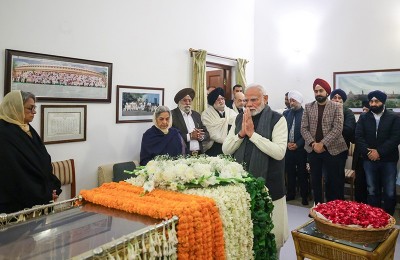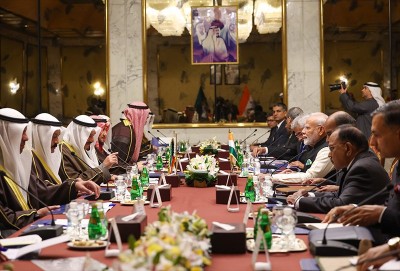
Meghalaya: Lingering Troubles
In the ongoing OHS-3, an unidentified GNLA militant was killed on March 2, 2016, in the Rongtok Gate area in West Khasi Hills District. Earlier, on February 28, 2016, a GNLA cadre, identified as Enison Ch. Momin aka Vodafone, was arrested from Adugre village under Williamnagar Police Station limits in East Garo Hills District. On his lead, Police recovered a huge quantity of arms and ammunitions from the jungles near Adogre village the next day.
According to a March 8, 2016, report, as many as four GNLA camps have been identified and neutralized. Security Forces (SFs) have already recovered 70 Improvised Explosive Devices (IEDs), 1,475 electrical/non-electrical detonators and half a kilogram of gelatine explosive materials during the current phase of OHS.
OHS-1 had been launched on July 11, 2014. During this phase, which ended on December 31, 2014, SFs killed 16 militants and injured 24. An official statement disclosed that six Policemen were also killed and another 10 SF personnel were injured during this period. OHS-2 was launched on April 2, 2015, and continued till June 6, 2015, with at least 17 militant fatalities, according to partial data compiled by the South Asia Terrorism Portal (SATP).
The declared aims of the first two operations were also the same: to establish a permanent Police presence in the interior areas and to deny any 'comfort zone' to GNLA and other militant outfits like United Liberation Front of Asom (ULFA-I) in the Garo Hills region.
Meanwhile, according to SATP data, since January 2016, Meghalaya has registered a total of eight fatalities, including a civilian and seven militants (data till March 13, 2016). In addition, the SFs have already arrested 54 militants.
During 2015, Meghalaya recorded a total of 61 fatalities, including 19 civilians, eight SF personnel and 34 militants; this was against a total of 76 fatalities, including 23 civilians, six SF personnel and 47 militants in 2014. Thus, overall fatalities, which had been rising continuously since 2009, registered a decline of 19.74 per cent in 2015, as compared to the previous year, dropping from 76 to 61.
Crucially, fatalities among civilians have also been on a decline over the last couple of years. Through 2015, there were 19 civilian fatalities, as compared to 23 in 2014. In 2013 the number of such fatalities stood at 28. Significantly, civilian fatalities had risen constantly since 2009, on and year on year basis, before the decline set in, in 2014. In 2008 there was no civilian fatality in Meghalaya. The State recorded one civilian fatality in 2009, increasing to three in 2010, 11 in 2011, 27 in 2012 and 28 in 2013. The 2013 figure was the highest for civilian fatalities recorded in the State since 2002, when 29 civilians were killed.
Other indices of violence also registered a decline in 2015. The State recorded just one major incident (resulting in three or more fatalities), on March 10, 2015, in which four SF personnel were killed; as against eight such incidents in 2014, in which 28 persons were killed [six civilians, three SF personnel and 19 militants].
Incidents of abduction-for ransom which has long been rampant, especially in the Garo Hills Region, also fell marginally short of last year's total, though the number of victims was larger in 2015. According to SATP data, at least 44 incidents of abduction, in which 71 persons were held, were reported in 2015, as compared to 45 such incidents resulting in 57 abductions in 2014. [Reported incidents are likely to be a fraction of the actual incidence of such crimes, as families of victims often settle with the abductors without reporting to the Police].
While SFs succeeded in minimising the militant threat to civilian populations, they lost more personnel through 2015 as compared to the previous year, and at the same time killed fewer militants. The number of SFs and militants killed in 2015 stood at eight and 34, respectively, in 2015, as compared to six and 47 in 2014.
SFs, meanwhile, arrested 146 militants through 2015, adding to the 173 arrested in 2014. The mounting pressure of operations also led to the surrender of 67 militants in 2015. Significantly, on December 18, 2015, nine members of the Achik Matgrik Elite Force [AMEF] surrendered with arms before Superintendent of Police (SP) Davis Nestell R. Marak at the Rongjeng Police Station in East Garo Hills District, purportedly bringing the curtains down on this armed group. Inspector-General of Police (IGP) (operations) G.H.P. Raju clarified, "The surrendered cadres revealed that they were the remaining members of AMEF after the surrender of their chairman and commander-in-chief. They also claimed that with today's surrender, the AMEF, as an organisation, would cease to exist." Earlier, on December 9, 2015, Timut Marak, 'chairman' of AMEF, along with Sengjan Arengh, its 'commander-in-chief', had surrendered with arms before Meghalaya Director General of Police (DGP) Rajeev Mehta. Earlier, 796 militants had surrendered in 2014, among whom 748 were from the two factions of ANVC - 447 from ANVC and 301 from its Breakaway faction (ANVC-B) who disbanded at a function at the Dikki-Bandi Stadium at Dakopgre in Tura in West Garo Hills District on December 15, 2014.
Nevertheless, the increase in fatalities among SFs with a simultaneous decline in fatalities among militants is worrying. There are other concerns as well. DGP Mehta categorically stated on December 31, 2015, that there were still many tasks left to be accomplished by the State Police in bringing about long lasting peace in Garo Hills and the rest of the State.
The most lethal outfit against SFs has been GNLA. It is, consequently, not surprising that the primary declared goal of the ongoing OHS-3 is the neutralisation of this formation. In a statement issued to the media on August 9, 2015, GNLA had declared that its team of 'Eagle Hunters' [a seven-member 'special operation team'] was specifically formed to carry out attacks on Police personnel 'anytime anywhere': "Our Eagle Hunters team will shoot Police personnel dead on the spot no matter how many Police personnel are there at the time of the incident." An unnamed top Police official revealed on January 12, 2016, that five close aides of the 'commander-in-chief' Sohan D. Shira were trying to carry out subversive activities on Shira's instructions. With around 80-odd cadres, GNLA is making a desperate attempt to regroup after sufferingmassive setbacks following operations launched by SFs.
On January 25, 2016, GNLA announced that it would join hands with other major militant groups operating in the Northeast so as to be part of the coordination committee of the United National Liberation Front of Western South East Asia (UNLFWSEA), led by ULFA-I and the Khaplang faction of the National Socialist Council of Nagaland (NSCN-K).
The Union Ministry of Home Affairs (UMHA) 2014-15 Annual Report noted that various militant groups such as ULFA-I, the I.K. Songbijit faction of the National Democratic Front of Bodoland (NDFB-IKS) and the Isak-Muivah faction of National Socialist Council of Nagaland (NSCN-IM), among others, had been using the Garo Hills corridor to sneak in and out of Bangladesh, taking advantage of the adverse geographical conditions and the remoteness of the area. The report also observed that groups like GNLA, ULFA-I, NDFB-IKS and NSCN-IM had their 'command structure' in the Garo Hills.
Meanwhile, on February 8, 2016, the State Government sent feelers to GNLA militants for talks. The response from the outfit is awaited. Earlier on August 14, 2015, the State Government had sent feelers to the Hynniewtrep National Liberation Council (HNLC), but the militant outfit is yet to respond. Another outfit operating in the State, the United A'chik Liberation Army (UALA), which had declared on February 29, 2016, that it would 'soon' be disbanded [date not specified], decided to postpone the ceremony as the outfit reportedly failed to mobilize its cadres. UALA had inked the "agreed text of settlement" with Meghalaya Government at a ceremony held at the Circuit House in Tura in West Garo Hills District on December 18, 2015.
Despite a sustained decline in insurgent violence in India's Northeast region over the years, Meghalaya continues to simmer with the remnants of a multiplicity of insurgent formations still active. State Home Minister Roshan Warjri asserted, on December 13, 2015, that the State Government was determined to crush militants who were trying to destabilize the efforts of the Government and the citizens to ensure normalcy in Garo Hills. Continuing SF operations need to do just that, even as the option of surrender by the residual insurgent formations is kept open.
Support Our Journalism
We cannot do without you.. your contribution supports unbiased journalism
IBNS is not driven by any ism- not wokeism, not racism, not skewed secularism, not hyper right-wing or left liberal ideals, nor by any hardline religious beliefs or hyper nationalism. We want to serve you good old objective news, as they are. We do not judge or preach. We let people decide for themselves. We only try to present factual and well-sourced news.







